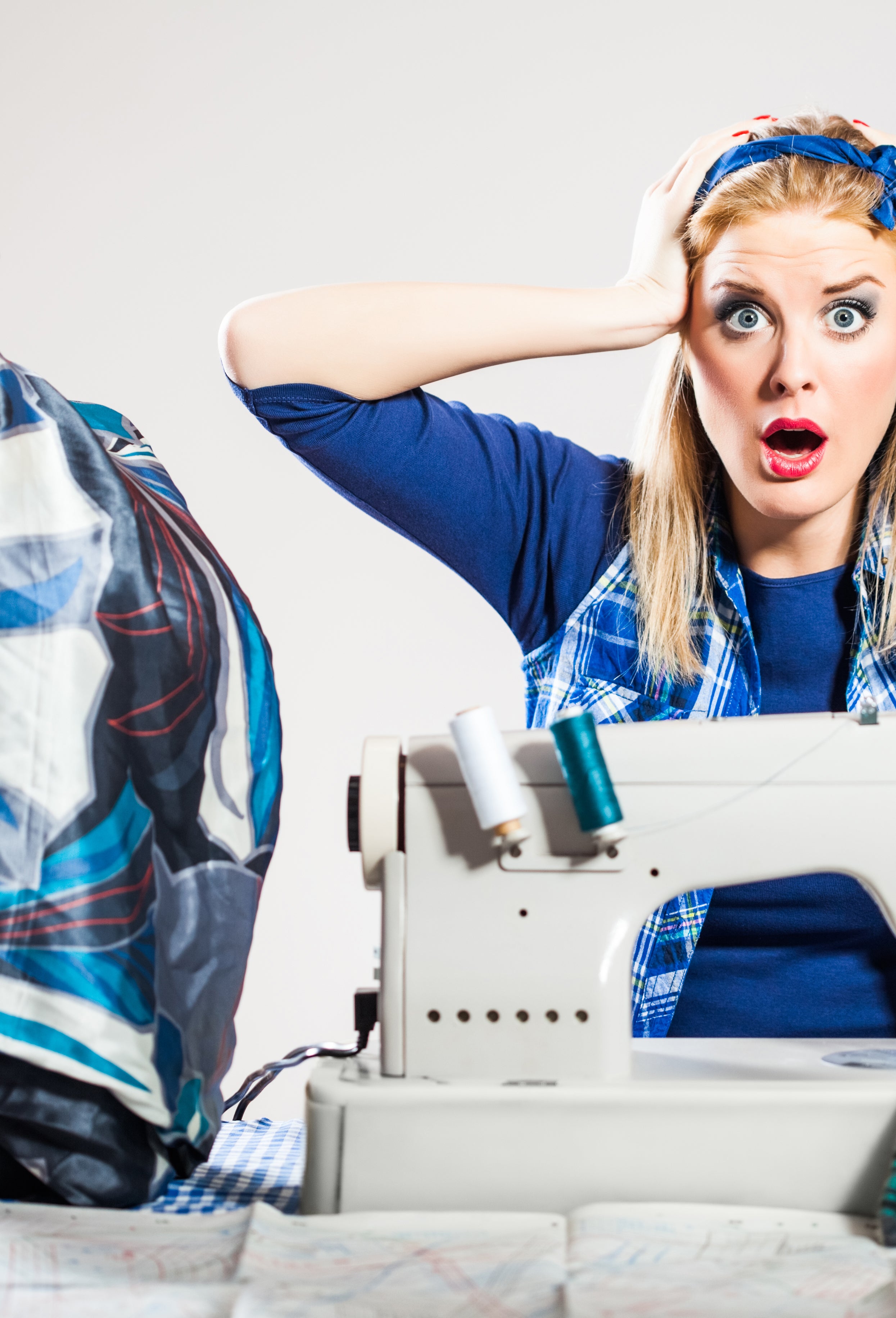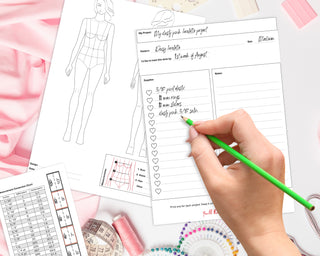Menu
Sewing Your Knit Garment- Choosing Needles and Threads

Have you ever been frustrated with knit garments not having good stretch and recovery at the seams? Have you ever spent hours making a beautiful pattern, and purchased great knit fabric, only to have your project come to a screeching halt as you attempt to sew it? The thread and needles used to make a garment can either ruin a beautiful garment or make it perform at its best. Avoid hearing the dreaded popping noise as you pull on your knit garment and seeing that coverstitch becomes an unraveling mess. Say goodbye to puckered seams and tunneled hems that prevent the fabric from stretching to its potential. Or worse... holes or runs in the fabric by a seam. We're here to help you make the right choices for your next project.
Thread Type
First let's look at the types of thread recommended for your knit garment based on fabric weight and garment type. It’s important to select the right type of thread to avoid the thread stretching too easily or having poor twist balance – which results in skipped stitches, open seams and poor stitching appearance.

You want to use a corespun or bonded nylon thread that has better ply security to avoid your thread from unravelling. Poly core or texturized poly threads should be used for basic seaming on most knit garments.
For performance or active wear, use a texturized poly or nylon thread. Wooly nylon threads for the bottom looper give coverstitch seams extra stretch.
The chart below compares some generic polyester threads – showing how you can get more elongation out of your thread/seams while balancing desired strength/performance.

Needles
Now let's move on to needle selection. Avoid using the wrong type and size of needle or damaged needles that can result in needle holes and runs in your garment. Ensure that the needle size and thread size are correct. If the needle is too small for your thread, it will result in excessive thread breaks.
For knit garments, you should be using ball point needles.
- Light warp knits: new round point
- General knits: thin or medium ball point
- Elastic: thin, medium, or heavy ball point
Point to Remember - The coarser the yarn is in the fabric, the heavier ball point needle is needed.
Here's a chart that you can use as a guide when selecting your thread Tex and needle size based on fabric weight.

Are you noticing puckering in your seams? There are 3 common reasons: Yarn displacement, tension puckering and feed puckering:
Yarn displacement – where the thread being used is too large for the weight of the fabric. Use the smallest thread size available that will maintain adequate seam strength/performance.
Tension puckering – where the thread tension is too tight. For any sewing project, you should use the minimum stitch tension possible to avoid skipped stitching which cause holes in the garment, thread breakage, and stitch cracking. The added stress to the thread with too high of tension can cause poor thread loop formation where the needle hits or misses the loop resulting in these issues. Generally, 5 to 7 times more tension is required on the needle thread than the bobbin thread. So set your bobbin thread to the lightest tension possible to set the stitch.

How can you test to see whether you have yarn displacement or tension puckering? Clip the thread between two connecting needle penetrations. If the tension is reduced, it’s tension puckering. If it’s not, it’s yarn displacement.
Feed puckering – when fabric plies are being fed into the seam at different rates. You’ll notice puckering on one side of the seam. A good test to see ply mis-matching – make 2 cuts in your fabric perpendicular to the seam where you’re noticing the most puckering. Remove the thread in the seam to see if the plies are the same length. How to solve – use minimum presser foot pressure. Use just enough pressure to prevent stalling.
Wavy seams? More differential action is needed on stretch knits to allow the seam to lay flat after sewing. What does this mean? The front should feed in more than the back is letting out. Adjust your differential feed (below the cloth plate on your sewing machine) to get the desired result and caution over stretching the fabric while sewing to have more consistent seam quality.
We hope these tips help you on your next knit sewing project!
Ciao for now!
– Submitted to Stitch Love Studio by Guest Writer, Lauren Famularo.
🥰 Keep in touch! Send messages, Share photos on Instagram @stitchlovestudio, comment, share your experiences.
👀 Check out or visit our Lingerie, Swimwear, Pajamas and Lounge Materials, Fabrics and Patterns at StitchLoveStudio.com.
✍ Sign up to receive news for events, freebies, coupons and sew much more!
📷 If you would like to use any of the photos from this blog, please credit us by adding the following information: "Image by StitchLoveStudio.com". Email me for additional information, requests or written permissions.
- Choosing a selection results in a full page refresh.

